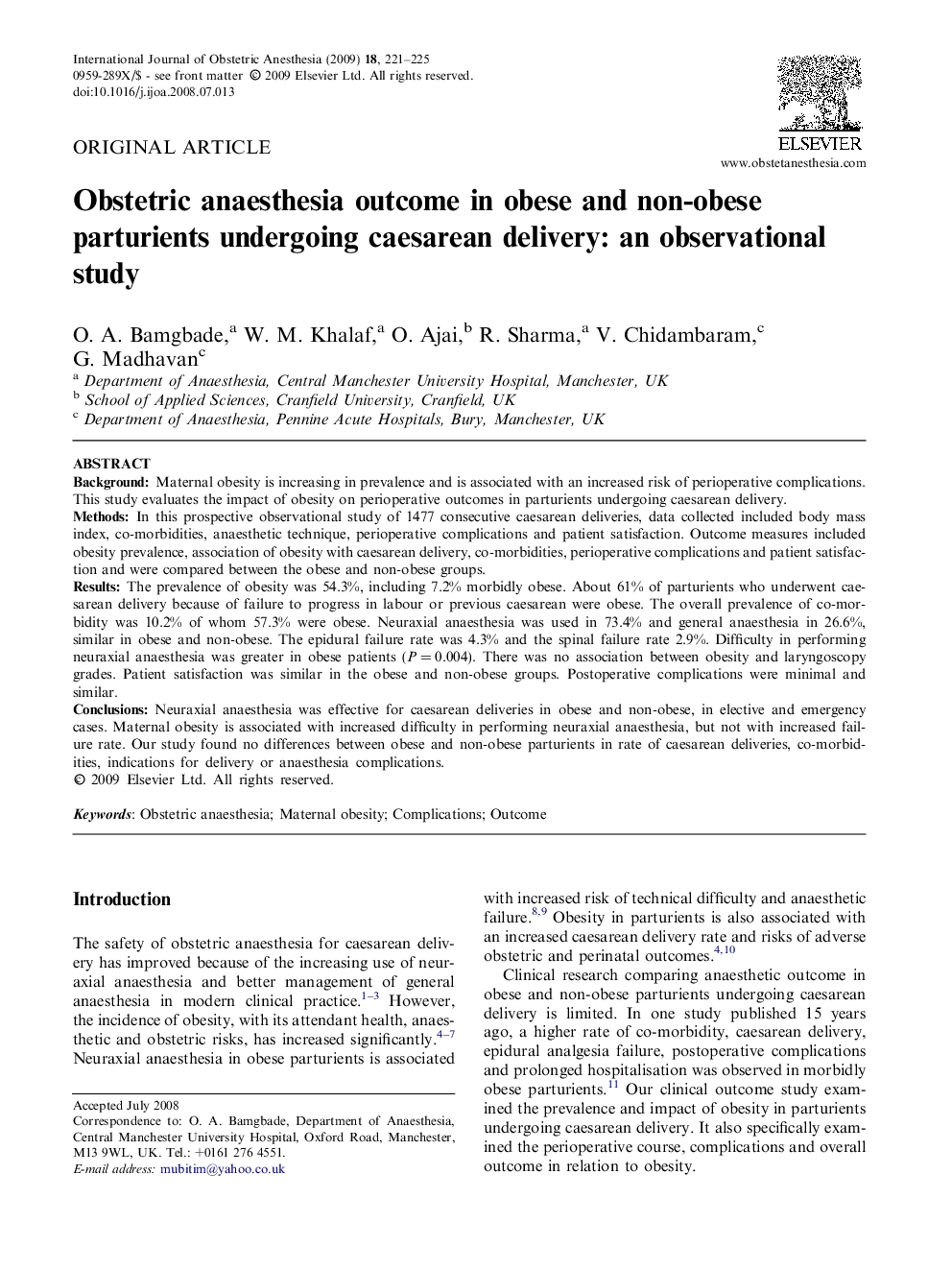| Article ID | Journal | Published Year | Pages | File Type |
|---|---|---|---|---|
| 2758428 | International Journal of Obstetric Anesthesia | 2009 | 5 Pages |
BackgroundMaternal obesity is increasing in prevalence and is associated with an increased risk of perioperative complications. This study evaluates the impact of obesity on perioperative outcomes in parturients undergoing caesarean delivery.MethodsIn this prospective observational study of 1477 consecutive caesarean deliveries, data collected included body mass index, co-morbidities, anaesthetic technique, perioperative complications and patient satisfaction. Outcome measures included obesity prevalence, association of obesity with caesarean delivery, co-morbidities, perioperative complications and patient satisfaction and were compared between the obese and non-obese groups.ResultsThe prevalence of obesity was 54.3%, including 7.2% morbidly obese. About 61% of parturients who underwent caesarean delivery because of failure to progress in labour or previous caesarean were obese. The overall prevalence of co-morbidity was 10.2% of whom 57.3% were obese. Neuraxial anaesthesia was used in 73.4% and general anaesthesia in 26.6%, similar in obese and non-obese. The epidural failure rate was 4.3% and the spinal failure rate 2.9%. Difficulty in performing neuraxial anaesthesia was greater in obese patients (P = 0.004). There was no association between obesity and laryngoscopy grades. Patient satisfaction was similar in the obese and non-obese groups. Postoperative complications were minimal and similar.ConclusionsNeuraxial anaesthesia was effective for caesarean deliveries in obese and non-obese, in elective and emergency cases. Maternal obesity is associated with increased difficulty in performing neuraxial anaesthesia, but not with increased failure rate. Our study found no differences between obese and non-obese parturients in rate of caesarean deliveries, co-morbidities, indications for delivery or anaesthesia complications.
